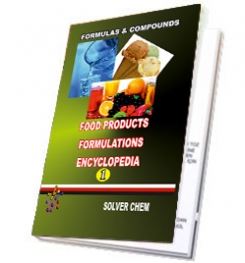Aniseed Oil
Castor Oil
Cinnamon leaf oil
Coconut Oil
Cod Liver Oil
Eucalyptus Oil
Grapefruit oil
Ginger oil
Lemon oil Standard
Linseed (Flaxseed) Oil
Olive Oil Extra Virgin
Omega 3 Fish Oil
Orange oil Sweet
Peppermint Oil
Rosemary Oil
Spearmint Oil
Star Aniseed Oil

An oil is any substance that is liquid at ambient temperatures and does not mix with water but may mix with other oils and organic solvents. This general definition includes vegetable oils, volatile essential oils, petrochemical oils, and synthetic oils.
Organic oils are produced in remarkable diversity by plants, animals, and other organisms through natural metabolic processes. Lipid is the scientific term for the fatty acids, steroids and similar chemicals often found in the oils produced by living things, while oil refers to an overall mixture of chemicals. Organic oils may also contain chemicals other than lipids, including proteins, waxes and alkaloids.
Lipids can be classified by the way that they are made by an organism, their chemical structure and their limited solubility in water compared to oils. They have a high carbon and hydrogen content and are considerably lacking in oxygen compared to other organic compounds and minerals; they tend to be relatively nonpolar molecules, but may include both polar and nonpolar regions as in the case of phospholipids and steroids.
Mineral oils

Crude oil, or petroleum, and its refined components, collectively termed petrochemicals, are crucial resources in the modern economy. Crude oil originates from ancient fossilized organic materials, such as zooplankton and algae, which geochemical processes convert into oil.It is classified as a mineral oil because it does not have an organic origin on human timescales, but is instead obtained from rocks, underground traps, or sands. Mineral oil also refers to several specific distillates of crude oil.An oil is any substance that is liquid at ambient temperatures and does not mix with water but may mix with other oils and organic solvents. This general definition includes vegetable oils, volatile essential oils, petrochemical oils, and synthetic oils
RELATED TAGS : What is oils in foods, food oleomaterials in food properties, how to use oils in food, where to use food oils, food ingredients, food chemicals, food materials, how much use food ingredients, food categories, food flavoring, food colorings. where to use acid regulators, why to use food nutraceuticals, properties of oils in food products, usage of aromatics, formulations of food products.

FOOD PRODUCTS FORMULATIONS ENCYCLOPEDIA contains formulations and production process of following products that are natural ice cream formulations, fruit flavored ice cream preparation,composition of diet ice cream making, ice cream coatings compounds, natural ice lollies, instant fruit juice powder manufacturing process, fruit juice concentrations, fruit nectar making, formulations of flavored fruit juices, fruit flavored soda, diet and light fruit soda, chewing gum formulations, sugar free diet chewing gum production process, chewing gum flavored coating preparation, halvah and turkish delights compositions, sugar candy compounds,sugar hard candy types, nuts coatings, almonds coatings preparations, meat bouillions formulas, chicken bouillions manufacturing process, vegetable bouillons compositions, fish bouillon making, meat sausage preparation, chicken sausages, meat burger making, chicken burger preparations and etc.
|
|
|
|
|
|
|
|
|
